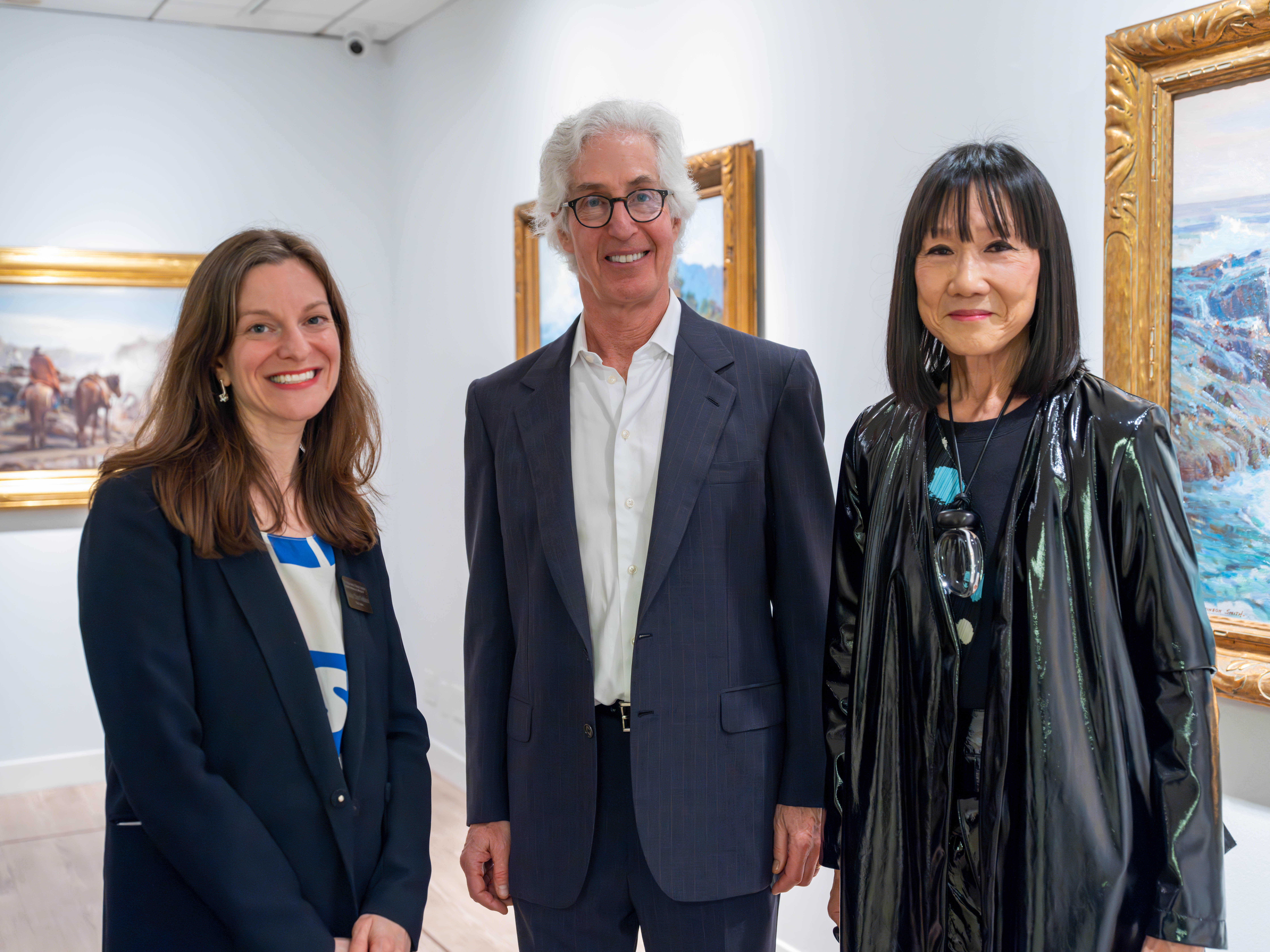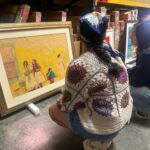
In January 2025, we were thrilled to welcome Alaina Claire Feldman as Langson IMCA’s inaugural chief curator. Alaina brings her international and public university museum expertise to shape the institution’s curatorial vision, working closely with faculty, staff, students, UC Irvine leadership, artists and the broader community to design innovative exhibitions, public programs and collection strategies.
With degrees in Art History and Social and Environmental Justice, Alaina is focused on how Langson IMCA’s collection and programming can spark dynamic conversations and collaborations within the academic community at one of the nation's top research universities.
Alaina joins us from The City University of New York, where she served as director and curator of the Mishkin Gallery at Baruch College. She also led exhibitions at Independent Curators International (ICI) in New York for nearly a decade. Her extensive career includes curating over 20 exhibitions, editing numerous publications, and teaching. This coming winter, she’ll also guest-curate an inaugural exhibition for the new Taichung Art Museum in Taiwan and the annual festival at Kim? Contemporary Art Centre in Latvia.
We sat down with Alaina to ask her a few of our burning questions as she embarks on this exciting new chapter with us.
Q1. Looking back on your career, were there any key figures or mentors who significantly shaped your path into the curatorial field? Can you share how their influence impacted your approach to curation and the role of curators in shaping the art world?
Constance Lewallen from the University of California Berkeley Art Museum and Pacific Film Archive. Connie was a central figure in the California art scene. She gave many of the California conceptualists their first shows in the 60s and 70s and supported them through their entire careers. She was dedicated to scholarship, research, and the next generation of curators, especially women. I was lucky to work closely with her on many exhibitions and publications over the years, and to investigate ideas alongside her. It was Connie who introduced me to University of California art museums and to the humble but powerful influence that curators can yield.
Q2. From an academic perspective, how do you envision advancing UC Irvine’s art scene and further elevating its impact?
There is so much work that goes into curating which is often left unseen or unsaid. Without overprescribing artists’ intentions, I’m excited to think about publications or analogous forms that expand upon the deep research that goes into exhibition making. For example, I’m inspired by the critical didactics and publication that Catherine Lord and Charles Gaines made for the 1993 UC Irvine exhibition The Theater of Refusal: Black Art and Mainstream Criticism. This exhibition positioned work by Black artists next to previously published press reviews of their work marking a contrast between what artists were trying to do and how the art world perceived them. In his essay for the publication, Gaines expands his academic and theoretical ideas to offer a way out of mainstream identity politics of the time. Having places within and beyond the gallery that foster and support critical scholarship by our faculty, students, and curatorial team is something I think has and will continue to set UC Irvine and Langson IMCA apart.
Q3. How have your experiences curating in New York and internationally shaped your approach to curatorial work and informed your goals within the academic arts community?
I am not just interested in art in the world, but art of the world that reflects the context of where, when, and how it’s made and presented. I’ve been very lucky to travel and meet inspiring artists and curators from around the world and to build on those relationships over many years in mutually beneficial ways. This experience has made me more sensitive to people with different backgrounds and has taught me to be a better listener.
Q4. Having just moved here, what are you most excited to explore in Southern California—whether it's the arts, local culture, or something else?
I am so excited about and inspired by Southern California’s proximity to many kinds of landscapes and topographies. I’m curious to learn about the ways it continues to influence culture—from the food that’s prepared and eaten to the clothes that are worn to the music that’s made. And as an amateur surfer, I can’t wait to get to get in the water.
Q5. What advice would you offer to aspiring curators and artists who are eager to pursue a career in museums and the academic arts?
Stay curious and ask questions. See exhibitions whenever you can. Being in such a vibrant cultural region offers so many wonderful ways to encounter art. Don’t sleep on it!



